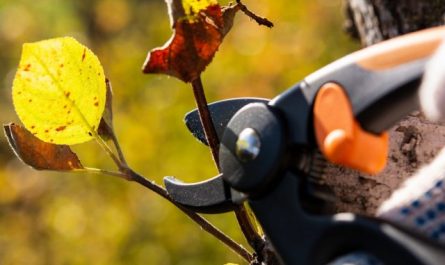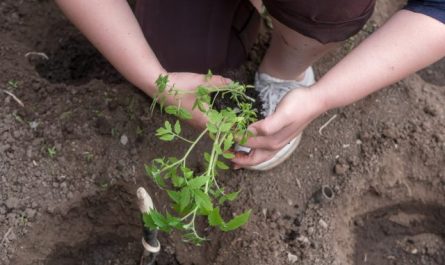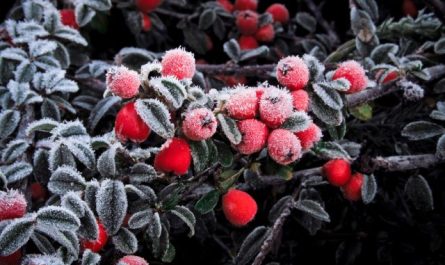Most gardeners have planted several plum trees on their summer cottages. But they often complain that there is no harvest at all or it is extremely low. Why? Look at the varieties you grow. These are mainly Skorospelka Krasnaya, Tulskaya Chernaya, Vengerka Moskovskaya, that is, varieties of folk selection. Now new varieties of plum have been bred, distinguished not only by high yield, but also by early fruiting, high taste qualities of fruits.
From the species of plum, the domestic one is:
- Morning, Opal, Kolkhoz Renklod – early ripening;
- Blue Gift, Zanyatnaya, Sukhanovskaya – medium term;
- Renclode Tambovsky, Memory of Timiryazev – late period;

Varieties that originated from Chinese and American plums are Skoroplodnaya and Krasny Shar. Varieties of the new original type Russian plum (hybrid cherry plum):
- early ripening – Early pink. Kuban comet;
- medium term—elite form 8-14, Vetraz;
- late term – Mara.
The reader may ask: aren’t there too many varieties on offer? I answer that the varieties on offer are not ideal and, having their own advantages and disadvantages, complement each other accordingly. Varietal and species diversity also contributes to more regular fruiting and less development of pests and diseases. If the plot is small, then in order to avoid a “conflict” with other garden crops, the above-mentioned varieties can be grown as grafts in the crown of 4-5 winter-hardy plum trees (Tenkovskaya Golubka, Rakitovskaya, Tatarskaya Dessertnaya, Skorospelka Krasnaya, etc.). Descriptions of these varieties are given below.
Plum house
Morning
Authors: X.K. Enikeyev, S. N. Satarova, V. S. Simonov.
Obtained by crossing the local variety Skorospelka Krasnaya and the Western European (French) variety Renclode Ulensa. Flower buds and trees themselves are not very winter-hardy, but the latter recover well after freezing. Relatively resistant to diseases. Blooms from May 12 to 20. Early-bearing — in the 4th year after planting, it produces up to 22 kg of fruit per tree. Highly self-fertile. Bears fruit poorly after winters with severe frosts, after a thaw, but various spring stresses do not affect the yield. The fruits are large, with an average weight of 26 g, maximum — 32 g, greenish-yellow, oval, with a pleasant sweet and sour taste. Ripens from August 4 to 11. The stone is free, making up 6,5% of the fruit weight. The fruits are good both fresh and for various types of processing, including freezing. In 2001, it was included in the State Register of Breeding Achievements approved for use in the Central Region of Russia.

Opal
Swedish variety. Trees are 2,5-3 m tall, with a round compact crown, not very winter-hardy, but recover very well after freezing. It blooms from May 12 to 20, early-bearing — in the 4th year after planting it produces up to 21 kg of fruit per tree. It bears fruit insufficiently consistently (7 crop failures out of 16 years) due to severe freezing at temperatures below -30 °C, but after 1-2 years the yield is restored. Resistant to diseases.
The fruits ripen early (August 2-10), have a sour-sweet harmonious taste, and an average weight of 15 g. The stone is free, making up 4,7% of the fruit weight. The variety is self-fertile, for universal use. It is recommended to use it in summer cottages in the central and southern regions of the Non-Black Earth Region in the form of grafts in the crowns of winter-hardy plum trees or to grow it as a rootstock crop.
Renkloed collective farm
Author: I. V. Michurin.
Obtained by crossing the southern variety Green Renclode with blackthorn. Trees are 2,5-3 m tall, with a rounded crown, of average winter hardiness. The winter hardiness of flower buds is above average, which allows this variety to be grown in the northern regions of the Moscow region, and also to be used with great success as a pollinator for other varieties of domestic plum. It begins to bear fruit early (in the 3rd year after planting, the yield reaches 5 kg of fruit per tree). The variety is self-sterile, it needs pollinators. The average yield is 8 kg per tree. Breaks in fruiting are mainly associated with cold and rainy weather during flowering.
The fruits weigh about 17 g, are round, greenish-yellow. The pulp is juicy, with a good sweet and sour taste. The stone does not lag behind the pulp and makes up 6,5% of the fruit weight. Ripening is early, August 10-18. The fruits are mainly used fresh.

Blue door
Authors: X.K. Enikeyev, S. N. Satarova, V. S. Simonov.
Obtained from crossing the local variety Ochakovskaya Chernaya and the Pamyat Timiryazeva variety. The tree height is up to 3 m. The winter hardiness of the flower buds is above average, the tree is average. It blooms on May 13-18. It is early-bearing, in the 3rd year after planting it produces 8 kg of fruit per tree. The average yield over 16 years is 14 kg. It bears fruit relatively regularly – only 4 crop failures have been recorded over 16 years. The fruits ripen together – August 16-24. Their average weight is 14 g, the maximum is 17 g. They are oval, dark purple. The tasting score for fresh is 3,8 points, processed – 4 points. The stone makes up 3% of the fruit weight, it lags behind the pulp satisfactorily. The variety is highly self-fertile. In 7,1, it was included in the State Register of Breeding Achievements approved for use in the Central Region of Russia.
Entertaining
Authors: X.K. Enikeyev, S. N. Satarova, V. S. Simonov.
Obtained by crossing the Michurin variety Renclode Kolkhozny and the southern variety Victoria. The winter hardiness of flower buds is lower than that of Siny Dar, but higher than that of Utra. Bushy trees, 2,5-3 m high, recover well from freezing. Slightly affected by leaf diseases. The variety is very early bearing – in the 3rd year after planting it produces up to 20 kg of fruit per tree. Self-sterile, but still bears fruit relatively regularly (3 crop failures out of 16 years), the average yield is 14 kg of fruit per tree. The best pollinators for Zanyatnaya are Vengerka Moskovskaya, Pamyat Timiryazeva. Fruits have an average weight of 16 g, maximum – 22 g, outwardly unattractive, green with a weak purple-orange hue, oval in shape. Tasting score is 4,1 points. Good both fresh and processed. The stone is well separated from the pulp, it makes up 3,7% of the fruit weight. The variety has been submitted to the State Variety Testing in the Central Region.

Sukhanovskaya
Authors: Kh. K. Yenikeev, S. N. Satarova.
Obtained by crossing the varieties Skorospelka Krasnaya and Renclod Zeleny. Trees up to 3 m high, with a rounded compact crown. Winter hardiness of flower buds and tree is average. Blooms from May 13 to 20. Begins bearing fruit in the 3rd year after planting and produces 8 kg of fruit per tree. The average yield is 10 kg of fruit per tree. Self-sterile, the best pollinators are Vengerka Moskovskaya, Pamyat Timiryazeva, Renclod Kolkhozny and other simultaneously blooming varieties of domestic plum. Round, purple-red fruits with an average weight of 21 g, good taste, ripen in the third decade of August. The stone is medium, well separated from the pulp. A variety of universal purpose In 2001 it was included in the State Register.
Renclode Tambovsky
Authors: Kh. K. Yenikeev, S. N. Satarova.
Obtained by crossing Skorospelka Krasnaya with Renklod Zeleny. The tree is up to 4 m high, with a rounded, slightly drooping crown. Its winter hardiness is average, the number of flower buds is above average. The variety is early-bearing – in the 3rd year after planting it produces up to 8 kg of fruit per tree. Self-sterile. The best pollinators are Vengerka Moskovskaya, Renklod Kolkhozny. The average yield is 8 kg of fruit per tree, the maximum is up to 35 kg.
The fruits are round, medium-sized, weighing 16-20 g, purple, with a thick coating. The pulp is dense, sweet with a sour taste. The stone separates well from the pulp and makes up 8,7% of the fruit weight. The fruits are resistant to rot; at room temperature they are stored for more than a week, and in the refrigerator (2-5 °C) – up to 2,5 months, ripen in the first ten days of September, universal purpose. Due to the severe damage to the tree trunk by sunburn, whitewashing is mandatory. It works better on trunks or skeleton-forming trees.
Memory of Timiryazev
Author: Kh. K. Yenikeev, V. A. Efimov.
Obtained by crossing Victoria and Skorospelka Krasnaya. The tree is up to 3 m high with a rounded drooping crown. The winter hardiness of the flower buds and the trees themselves is average, although the latter recover well after freezing. The trees are early-bearing – in the 3rd year after planting they produce up to 11 kg of fruit per tree (some two-year-old seedlings already in the nursery produce up to 1,5 kg). The variety is highly self-fertile, normally bears fruit in years with abiotic stress in the spring. Breaks in fruiting occur due to severe freezing of flower buds during prolonged frosts of -33-35 °C and sudden temperature changes. The average yield is 8 kg of fruit per tree, the maximum is up to 35 kg. The fruits are ovoid, medium-sized (18-22 g), yellowish with a beautiful red blush. The pulp is sweet, with a slight acidity.

Early
Authors: Kh. K. Yenikeev, S. N. Satarova.
The variety originated from pollination of flowers of Chinese-American hybrid plum with pollen of Ussuri red plum. The tree is small, up to 2,5 m high, with a rounded spreading crown. Skeletal branches are densely covered with fruit twigs, and annual shoots are covered with fruit buds. Shoots are shiny, red-brown, leaves are elongated, light green, peach-shaped. Tree and fruit buds are relatively winter-hardy. It begins to bear fruit in the 2nd year after planting. The variety is self-sterile, the best pollinators are Krasny Shar and hybrid cherry plum varieties. Fruits ripen in the 2nd decade of August, medium-sized (20-25 g), round, bright red with a light bloom. The pulp is yellow, juicy with a pleasant aroma, sweet and sour. The stone is small, semi-retractable. Suitable for growing in the northern regions of the Moscow region.
Hybrid cherry plum (Russian plum)
A new crop, and a few words about it in particular. Perhaps, one can predict in advance the reaction of an inexperienced gardener: “It has no place in my garden, since its fruits are small and sour.” The characteristics of hybrid cherry plum varieties will force one to change this opinion. In addition, most of them are significantly weaker or not affected at all by many diseases and are not damaged by pests typical of domestic plum, ripen earlier than common plum, thus filling the gap in fruit consumption after the departed cherry and not yet ripe plum.
Early pink
Author O. S. Zhukov.
The trees are highly winter-hardy, have shown good winter hardiness in the cold poles of the Tula and Ryazan regions. The variety is relatively resistant to fruit rot and aphids. It is early-ripening and productive. The fruits are of very early ripening (removable maturity occurs at the end of July) with an average weight of 15 g, round, yellowish-red. The pulp is juicy, sour-sweet, with an original aroma.

The stone is small, half-detached from the pulp, and makes up 4% of the fruit weight. The variety is recommended for testing throughout the Moscow region and for further selective improvement of the crop.
The Kuban Comet
It was bred at the Crimean Experimental and Selection Station of the All-Russian Research Institute of Plant Genetics by breeders G. V. Eremin and S. N. Zbrodina from crossing the Chinese-American plum Skoroplodnaya with the cherry plum Pionerka. The tree is bushy, low-growing (2,5-3 m high). In the conditions of the Moscow Region, it is moderately winter-hardy, with excellent regeneration capabilities. The winter hardiness of flower buds is below average, but even in years of their severe freezing, there is a good harvest. Flowers tolerate spring frosts. The variety is resistant to aphids, partially self-fertile. The average yield is 8 kg of fruit per tree, the maximum is 18 kg per tree. Depending on the yield, the weight of the fruit varies from 24 to 30 g, their shape is ovoid. The skin has a slight waxy coating, burgundy. The pulp is yellow, fibrous, juicy. The taste is sweet and sour, “full”. The stone is half-detached from the pulp, it makes up 4,2% of the fruit weight. Ripening occurs in late July – early August. The variety is best cultivated in the southern and central regions of the Moscow region.
When pruning the Kuban Comet, do not remove overgrown branches, especially on the trunk and main skeletal branches.

Plants of the Russian plum of the above-described varieties are better adapted to the conditions of the southern and central regions of the Moscow region. When laying out a garden, preference is given to own-rooted seedlings, they are planted in elevated places, slopes of southern and southwestern exposure, fairly gentle and well protected from cold winds, but ventilated. The groundwater level on the site should be deeper than 1,5 m, the soils – moderately moist, well-cultivated, humus, neutral.
I would also like to share my experience of grafting. The easiest way is to graft behind the bark. In the garden, you should choose an unnecessary, young tree, without frost cracks and burns and with light wood, and on it one to three main skeletal branches, extending from the trunk at the most obtuse angle, and cut them with pruning shears or a saw, stepping back 10-15 cm from the branch, clean the cut with a sharp garden knife and make a longitudinal cut of the bark to the wood from the edge of the cut with a length of 2,5-3 cm with a grafting knife. With the back of the knife, slightly bend one of the edges of the bark and insert under the bent edge with an oblique cut to the wood a piece of the same length of the cutting with 2-4 nodes. Depending on the thickness of the stump (1,5-5 cm), graft 2-5 cuttings in this way. Then wrap the grafting site with film, and cover the unwrapped parts of the cuts with garden pitch. The grafting should be done during the active growth of the shoots, when the bark separates well from the wood (second ten-day period of May – first ten-day period of June).
Author: Vladimir Sergeevich Simonov, candidate of agricultural sciences, senior researcher at the selection department of VSTISP, (Moscow)



















